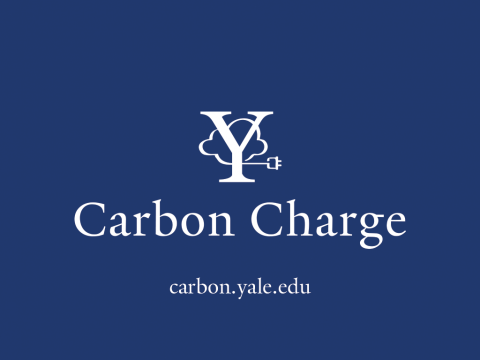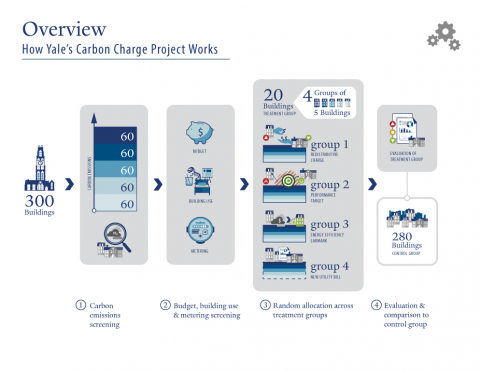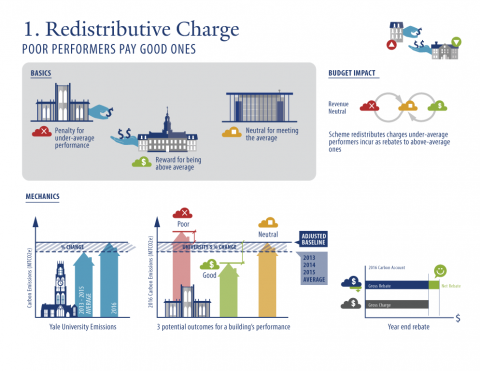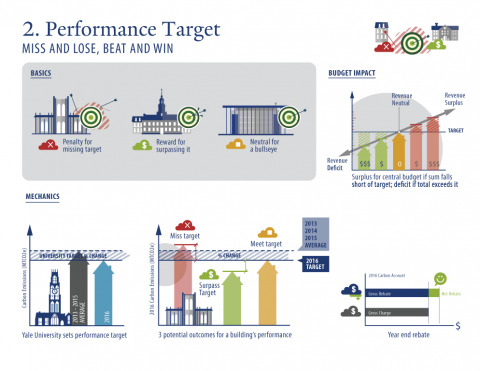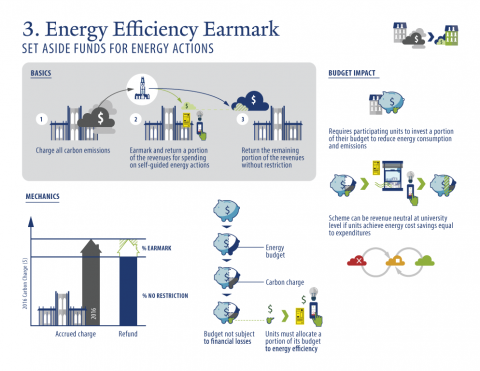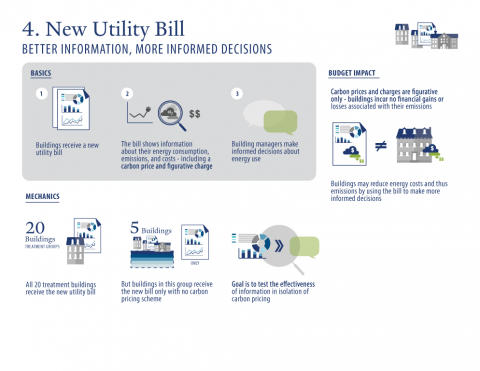Short summary of pilot design
- Three-year averages of annual emissions were calculated for ~300 buildings served by Yale’s three power plants, as well as remote facilities in Connecticut, and the resulting values were divided into five groups equal in number, with the largest consumers in group one and the smallest users in group five.
- Treatment groups were compiled by selecting one building from each of the five consumer groups. With four treatment groups, twenty buildings in total were selected for the pilot.
- Buildings were screened for budget and building use, as well as reliable metering equipment by conducting a three-year look back on building-level meter performance, in order to create a representative grouping. Each of the four groups and thus the pilot as a whole reflect the university’s portfolio of large and small consumers as well as budget and building types.
- Finally, no lead administrator or building manager was placed in more than one group and buildings were randomly assigned to their treatment groups, with the remaining 280 buildings from our analysis serving as the control.
Brief overview of carbon-pricing schemes
- Redistributive charge: Charges are applied to units which perform relatively worse than the university’s average change in emissions from a baseline and redistributed as rebates to those which perform relatively better. The sum of charges and rebates is zero and, as a result, the scheme is revenue-neutral centrally.
- Performance target: Charges and rebates are applied on the margin based on a unit’s performance relative to an established target. The scheme is not revenue-neutral by design and there is the possibility of a central deficit or surplus.
- Energy efficiency earmark: A unit is charged a carbon price on a monthly basis then rebated in full at the end of the year with a portion restricted for investment in small-scale and behavioral energy efficiency projects within the unit.
- New energy bill: Units receive a new energy bill showing their emissions and the social cost in addition to their energy consumption and cost. The three other treatment groups receive the same bill but with carbon-pricing information tailored to their specific pricing scheme.
All schemes use the federal government’s value for the social cost of carbon and apply the charge to consumption, not generation.
The objective of Yale’s internal carbon-pricing program is to use financial incentives to promote behavioral change which results in energy conservation and, as a result, greenhouse gas emissions reduction.
October 26, 2015
